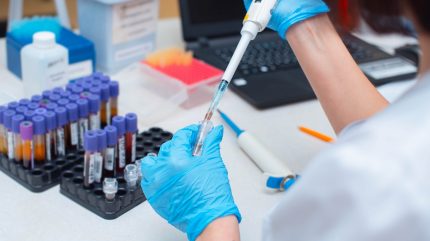
A team from Aston University’s Aston Institute of Photonic Technologies in the UK has developed a new blood-based cancer detection technique to be quicker, cheaper, and less painful than current methods.
Led by professor Igor Meglinski, the new approach involved analysing the polycrystalline structures in dried blood samples to detect early stages of diseases such as cancer using light.

Discover B2B Marketing That Performs
Combine business intelligence and editorial excellence to reach engaged professionals across 36 leading media platforms.
The research, detailed in the paper “Insights into polycrystalline microstructure of blood films with 3D Mueller matrix imaging approach,” published in Nature’s Scientific Reports, showcases a polarisation-based image reconstruction technique.
This method allows for a comprehensive analysis of blood proteins’ tertiary and quaternary structures, which change during the onset of cancer.
Meglinski’s team conducted a layer-by-layer analysis of dry blood smears. The study examined 108 blood film samples from healthy volunteers, prostate cancer patients, and those with aggressive cancer cells.
The findings of the study demonstrated a 90% accuracy rate in the early diagnosis and classification of cancer.

US Tariffs are shifting - will you react or anticipate?
Don’t let policy changes catch you off guard. Stay proactive with real-time data and expert analysis.
By GlobalDataMoreover, the technique utilises blood samples rather than tissue biopsies, reducing the trauma and risk associated with current cancer detection practices.
Meglinski said: “Our study introduces a pioneering technique to the liquid biopsy domain, aligning with the ongoing quest for non-invasive, reliable and efficient diagnostic methods.
“A key advancement in our study is the characterisation of the mean, variance, skewness, and kurtosis of distributions with the cells, which is crucial for identifying significant differences between healthy and cancerous samples.
“This breakthrough opens new avenues for cancer diagnosis and monitoring, representing a substantial leap forward in personalised medicine and oncology.”



